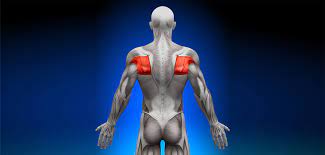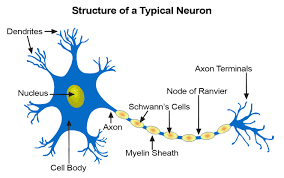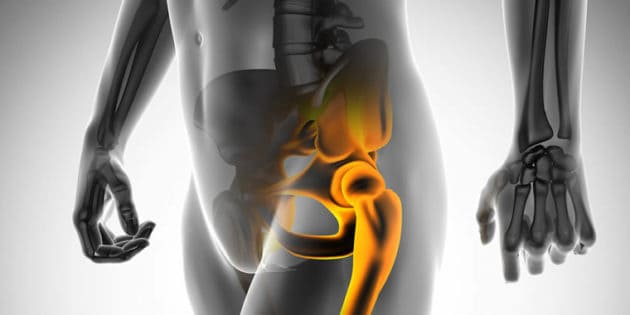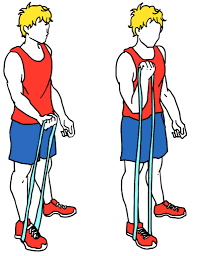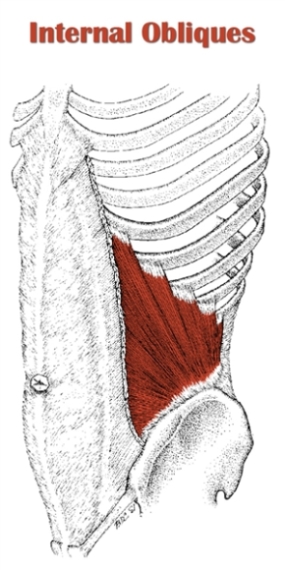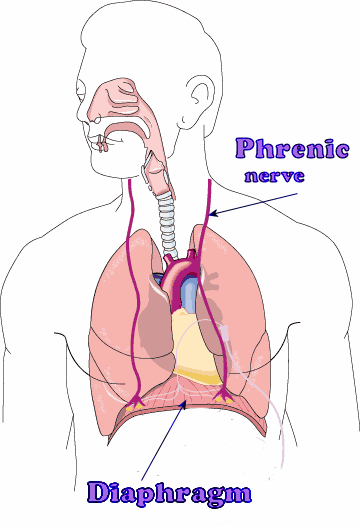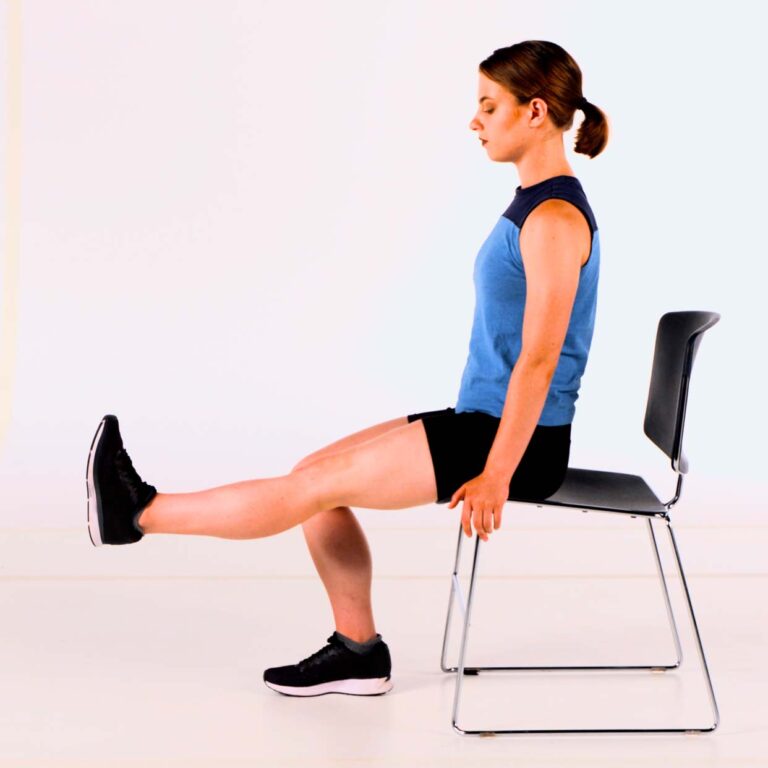Teres Minor Muscle
Table of Contents
What is Teres Minor Muscle?
- Teres minor is a posterior muscle of the shoulder that enlarges between the scapula & the head of the humeral bone. It is one of the 4 muscles of the rotator cuff, along with the supraspinatus, infraspinatus, & subscapularis.
- Rotator cuff muscles act combine to control the movements of the humerus head & work as stabilizing it within the glenoid cavity of the glenohumeral joint, as the arm moves in many directions. Every muscle within the group also has its own primary role, & that of teres minor is to externally rotate & do adduction the arm.
Relations of Teres Minor Muscle
- Teres minor sits superior to the long head of triceps brachii, being contracted between the trapezius & deltoid muscles. The trapezius half covers its medial surface, while the deltoid covers its superolateral surface. Inferior to the muscle is teres major, while infraspinatus is situated superiorly. Like the tendons of supraspinatus, infraspinatus, subscapularis, & long head of triceps brachii, the tendon of teres minor mixes with the glenohumeral joint capsule as it passes the shoulder joint, in this case with its anteroposterior surface. This relation provides reinforcement & mechanical support to the joint.
The teres minor muscle comprises the borders of the 2 intermuscular spaces of the axilla;
- Quadrangular space is situated under the shoulder joint. Teres minor bounds its superior border, while teres major bound it inferiorly, long head of triceps medially, & humeral shaft laterally. The function of this space is to give a passageway for the axillary nerve & posterior circumflex humeral artery, from the anterior to posterior shoulder areas.
- The triangular space is situated medially to the quadrangular space. Teres minor comprises it superiorly, while teres major & long head of triceps form its inferior & lateral borders, respectively. This space is traversed by the circumflex scapular artery.
Origin of Teres Minor Muscle
- Teres minor starts from the scapula, through 2 heads that are differentiated by a groove for the circumflex scapular artery. The attachment site spans the upper 2/3rd of the lateral border of the scapula. The fibers quickly merge into a single muscle belly which starts from superolateral towards the proximal humeral bone.
Insertion
- Teres minor ends into the greater tubercle of the humeral bone. Specifically, the superior fibers of the muscle give off a short tendon that attaches to the inferior facet of the greater tubercle of the humeral bone. While the inferior fibers attach adjacent to this, directly into the proximal shaft of the humeral bone, just distal to the tendon of the superior part & proximal to the starting of the lateral head of triceps brachii.
Nerve Supply
- Teres minor shares its blood supply with the deltoid muscle; this is innervated by the axillary nerve (C5 & C6), which stems from the posterior cord of the brachial plexus.
Blood Supply
- Teres minor blood supply comes from the circumflex scapular artery & posterior circumflex humeral artery. The artery is a sub branch of the subscapular artery, while the afterward stems from the axillary artery.
Action
- Shoulder joint: Arm adduction, Arm external rotation,
- Work as a Stabilizer humerus head in the glenoid cavity.
Variation
- Occasionally a group of muscle fibers from teres minor might be fused with the infraspinatus muscle.
The function of Teres Minor Muscle
- Rotator cuff muscles provide a functional musculotendinous unit that both work as a stabilizer & generates a motion on the glenohumeral joint. The primary goal of this entire muscular apparatus is to give a wide range of arm movement while keeping the head of the humeral bone centralized within the glenoid cavity.
- All 4 muscles are gently attached to surround the joint in such a way that they form a sleeve. Individually, each muscle has its self-pulling axis that results in some movement (prime mover), while combined together they generate a concavity compression. This is a stabilizing mechanism in which compression of the humeral bone onto the concavity of the glenoid fossa defense its dislocation by translating forces. Teres minor gave support from the posterior surface of the joint, defending the humeral bone from dislocating posteriorly.
- Emphasize movements, when the arm is in the anatomical position, teres minor laterally (externally) rotates the arm. When the arm is raised, teres minor can have many functions;
- Arm adduction: When working in synergy with teres major, latissimus dorsi, & pectoralis major, teres minor do adduction of the arm from the abducted position (lowers it). The function of this motion is to facilitate over-head upper extremity moves such as pulling & throwing.
- Arm external rotation: Working combined with infraspinatus, teres minor pulls the greater tubercle posteriorly, resulting in lateral (external) rotation of the arm. This motion provides the shoulder & at the same time loads the force in the preload phase of overhead actions (e.g. throwing). After the overhead activity has been done, teres minor squeeze eccentrically to smoothen the free fall of the upper limb.
Clinical Significance of Teres Minor Muscle
Injury to the Teres Minor Muscle
- There are 2 types of rotator cuff injuries: acute tears & chronic tears. Acute tears occur as a result of the sudden action. This may include throwing a powerful pitch, grabbing a fast-moving rope during water sports, falling over into an outstretched hand at speed, or doing a sudden thrust with the paddle in kayaking. A chronic tear generates over a period of time. They usually occur at or close to the tendon, as a result of the tendon rubbing against the below-placed bone. The teres minor is typically generic following a rotator cuff tear.
Teres Minor Muscle Atrophy
- Atrophy of the teres minor muscle is often due to a consequence of a rotator cuff tear, but generic isolated teres minor atrophies have also occurred. A quadrangular space syndrome creates excessive & or chronic pressure on the structures which pass via this anatomical tunnel.
- The axillary nerve & the posterior humeral circumflex artery cross via the space. People affected note shoulder pain & paresthesia down the arm 1st & foremost in abduction, extension, external rotation, & overhead activity.
- Selective atrophy of the teres minor muscle has been generally seen & pulled together directly with pressurization of the corresponding axillary nerve branch or posterior humeral circumflex artery. Fibrous bands, cysts of the glenoid labrum, lipoma, & dilated veins can take the quadrilateral space pathologically. Similar symptoms are common with anterior shoulder dislocation, brachial plexus injury, humeral neck fracture & thoracic outlet, & inlet syndrome. It is necessary to include those pathologies for a complete as possible differential diagnosis.
Teres Major Stretching Exercise
Doorway Stretch:
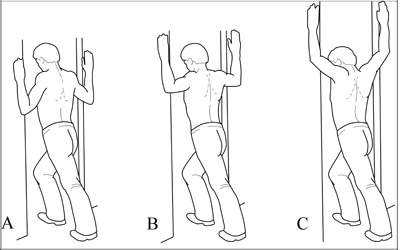
- Stand beside a door frame or corner of a wall.
- Keeping the back straight & the inner core engaged, bring the arm up against the wall with the elbow & shoulder bent at 90 degrees.
- With the arm planted on the wall, draw the opposite shoulder back followed by the torso in a straight line. Keep the back straight & core engaged.
- Hold this for 30 secs & repeat 3 times on each side 2 times per day.

Camel Pose Stretch:
- Kneel on the floor with knees hip-width apart & hands on the waist. Tuck the toes or place them flat against the floor.
- Slowly reach back & place one hand on each heel.
- Keep the chest lifted, shoulders back & down, engage the core, & slowly push the hips forward.
- Hold for 15-20 secs & repeat 3 times.

Hand Behind the Back Stretch:
- Stand tall with the feet shoulder-width apart. Interlace the fingers behind the back & straighten the arms.
- Keep the chest lifted & pull the shoulder blades downward.
- Hold for 15-20 secs & repeat 3 times.

Floor Angels Stretch:
- In supine position with feet hip-width apart & flat on the floor.
- Position both arms to the beside at a 90-degree angle with palms facing higher toward the roof.
- Keeping in contact with the floor at all times, slowly bring the arms up over the head until they are fully extended.
- Then slowly bring both arms behind to the 90-degree starting position.
- Repeat 10 times for 3 sets.
- Remember to keep the back flat against the floor & ribs tucked at all times
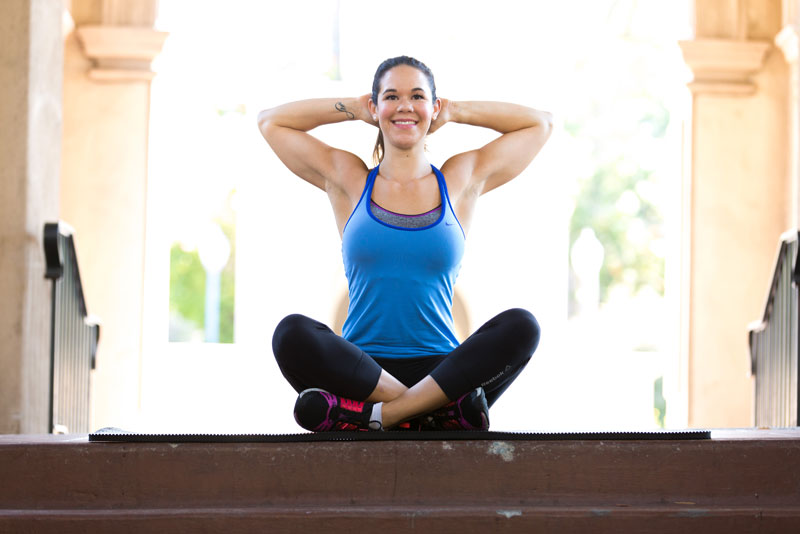
Above-the-head Chest Stretch:
- The patient is in a sitting or standing position, interlock the fingers, then bend the elbow joint & raise the arms above the head.
- Then Gently squeeze the shoulder joint blades together & move the elbow joint &hands backward.
- Vary the height of the hands to emphasize the shoulder joint & chest means hands are behind the head, hands are on top of the head, and the hand is also a few inches above the head.
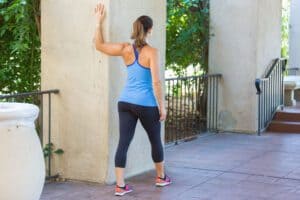
Bent-arm Wall Stretch:
- The patient is Assume a split stance, Right leg is in the front & the left leg in the back, in a doorway & at the end of a wall.
- Then Bring the left arm up to shoulder height & position the palm & inside of the arm on the wall surface or doorway.
- The patient arm looks like a goal post.
- Then Gently press the chest through the open space to feel the stretch.
- Moving the arm higher & lower which is allow to you stretch the various sections of the chest.
- Then Repeat this exercise on the other side.
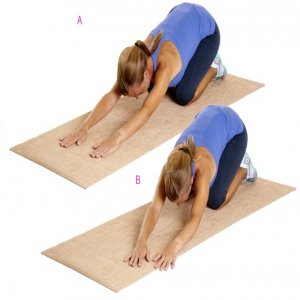
Extended Child’s Pose on Fingertips:
- The patient is Kneeling on the floor.
- Try to Touch the big toes together & the patient is sitting on the heels.
- Next, separate the knee joint about as wide as the hip joint.
- Then Bend the forward from the hip joint & walk the hands out as far in front of them as possible.
- With the arms extended palms are facing down then come up onto the fingertips as if the ball underneath the palms & melts the chest toward the floor.
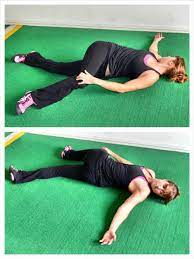
Side-Lying Parallel Arm Chest Stretch:
- The patient is lying prone on the stomach then bring both arms out to the sides then palms facing down & to create the letter, T.
- Then Start to roll onto the right side by pushing with the left hand.
- Lift the left leg, bend the knee joint & place the left foot behind you on the floor for stability.
- Then Rest the right temple on the floor.
- Must be Keep the left hand on the floor for balance.
- For the feel of the extra stretch, lift the left hand toward the ceiling.
- Then Repeat this stretching on the other side.
Teres Major Strengthening Exercise
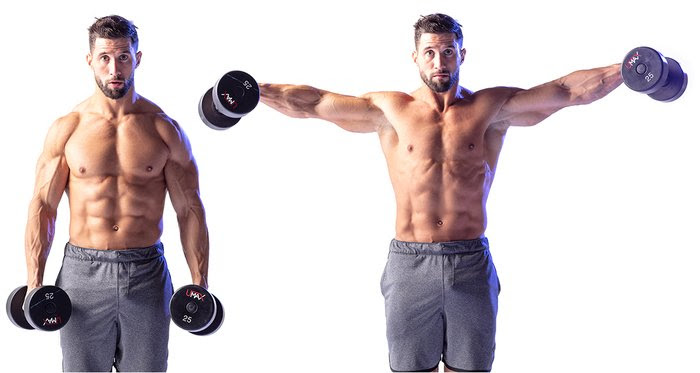
Lateral raises exercise:
- First, hold a pair of light dumbbells for this exercise.
- You are standing with the feet slightly wider than the hip joint width apart.
- Try to raise the weights to the sides till are at shoulder level.
- Must be remembered to engage the core muscles & slowly lower the weights down to the sides.
- Repeat this exercise for 2 sets, in every set consisting of 12–15 reps & 3 to 4 times per week.
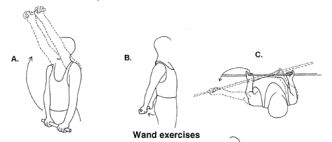
Wand exercise:
- This exercise is helpful to you for increasing ROM exercise.
- The patient is holding the wand with the help of both hands.
- Then perform the shoulder & elbow joint movement.
- Shoulder flexion, abduction, adduction, external & internal rotation & elbow flexion, and extension movement perform with the wand.
- Every exercise does the 2–3 times per day.
Shoulder joint internal rotation isometric exercise:
- To perform shoulder internal rotation you are standing facing a door frame & and outside the wall corner.
- The affected shoulder joint is near the door corner.
- Then flexed your elbow joint up to 90 degrees & make a fist.
- Try to gently press the towel into the corner wall & door jamb like as you rotate your arm inward towards your belly.
- Hold this pressing for 5 to 10 seconds & slowly release.
- Do the 10 to 15 repetitions.
Shoulder Extension isometric exercise:
- To perform shoulder extension you are standing to 6 inches away from the wall & your back is facing the wall.
- Your elbow joint is straight so your hand stays just near your buttocks & makes a fist.
- Try to gently press the towel into the wall behind you.
- Hold this pressing for 5 to 10 seconds & slowly release.
- Complete the 10 to 20 repetitions.
Bent-Over Horizontal Abduction Exercise:
- You are lying on your stomach means in a prone position on a table & bed with your injured arm hanging over the side.
- Must keep your arm straight & slowly raise it to eye level.
- Then slowly lower it back to the starting position & repeat this exercise.
- Do this exercise 2–3 times per day.
Bent-Over Horizontal Adduction Exercise:
- You are lying on your stomach means in a prone position on a table & bed with your injured arm hanging over the side.
- Must keep your arm straight & slowly raise it to eye level.
- Then slowly lower it back to the starting position & repeat this exercise.
- Do this exercise 2–3 times per day.
Dumbell Pullover Exercise:
- Lie across the bench with only the upper back & neck being supported by the bench.
- Hold the dumbbell with both hands, forming a triangle with the hands or by gripping the inner plate.
- Hold the dumbbell directly above the chest with elbows bent slightly.
- Engage the core & slowly lower the dumbbell past the face & over the head as far as you can.
- Pull the dumbbell back over the face to starting position.
- Complete the 5 to 10 repetitions.
- Repeat 3 sets at a time.
Cable Straight Arm Pull Down Exercise:
- Attach a wide grip handle or different accessory above the head to the cable machine
- Hold the handle with an overhand grip using both hands at shoulder width
- Bend forward slightly at the hips & with the elbows slightly flexed pull down on the handle by depressing the shoulder blades while extending the shoulders
- Pull downwards until the handle reaches the thighs
- Slowly return initial position
- Complete the 5 to 10 repetitions.
- Repeat 3 sets at a time.
Inverted Row Exercise:
- Set up bar slightly higher than the arm’s length above the surface
- Sit under the bar with both legs stretched out in front of you
- Reach up holding the bar with both hands using an overhand grip wider than shoulder-width apart
- Straighten the body so the arms are straight & heels are on the floor
- Pull up by retracting the shoulder blades until the chest hits the bar
- Slowly lower to initial position
- Complete the 5 to 10 repetitions.
- Repeat 3 sets at a time.
Underhand Yates Row Exercise:
- Hold a barbell with both hands using an underhand grip at shoulder width
- Bend & the knees & hinge forward at the hips at 45 degrees
- The arms should be almost fully extended with the bar over the thighs
- Pull the bar up to the waist
- Now stop at the top then slowly return to the initial position
- Complete the 5 to 10 repetitions.
- Repeat 3 sets at a time.
Underhand Grip Lat Pull Down Exercise:
- Sit on a bench seeing the cable machine
- Reach up & hold the bar with both hands using an underhand grip, shoulder-width apart
- Pull down on the bar by bringing the shoulder blades down & back until the bar reaches the chest
- Slowly return to the initial position
- Complete the 5 to 10 repetitions.
- Repeat 3 sets at a time.
Lat Pull Downs Exercise:
- Sit on a bench seeing the cable machine
- Reach up & hold the bar with both hands using an overhand grip, hands are a little wider than shoulder-width apart
- Pull downwards on the bar by bringing the shoulder blades down & back until the bar reaches the chest
- Slowly return to the initial position
- Complete the 5 to 10 repetitions.
- Repeat 3 sets at a time.
Pull-Ups Exercise:
- Grasp the bar, hands shoulder-width apart by using an overhand grip
- Begin with arms completely extended the pull the chest up toward the bar as high as you can
- Hold briefly at the top then back to the initial position
- Complete the 5 to 10 repetitions.
- Repeat 3 sets at a time.
ChinUps Exercise:
- Hold the bar, hands shoulder-width apart palms with an underhand grip
- Begin with arms completely straight & pull the chest up to the bar as high as you can
- Hold briefly at the top then return to the initial position
- Complete the 5 to 10 repetitions.
- Repeat 3 sets at a time.
Single-Arm Dumbell Row Exercise:
- Hold a dumbbell with a neutral grip with the right hand then place the right knee & right hand under the shoulder on a bench.
- Hold the dumbbell with the left arm straight directly under the left shoulder
- Pull the dumbbell upwards, bending at the elbow & keeping the arm close to the body until the dumbbell is next to the hip
- Slowly lower to initial position
- Complete the 5 to 10 repetitions.
- Repeat 3 sets at a time.
Seated Cable Rows Exercise:
- Sit on a bench with the knees bent then reach forward & grab the triangle handle
- Pull the handle back towards the navel keeping the back straight & squeezing the shoulder blades together
- Slowly return to the initial position
- Complete the 5 to 10 repetitions.
- Repeat 3 sets at a time.
High Cable Reverse Crossover Fly Exercise:
- Begin with both handles at head height on the cable machine
- Stand seeing in the center of the two-pulley machine
- Reach up & across the body with both hands grabbing the handles with an overhand grip (or grab the cables)
- Pull the elbows down, out & back as far as possible until the arms are in line with the back
- Slowly return to the initial position
- Complete the 5 to 10 repetitions.
- Repeat 3 sets at a time.
Cable Supine Reverse Fly Exercise:
- Begin with a bench in the center of 2 pulleys
- Reach up across the body grabbing both handles(cable) with an overhand grip
- Lie down on the bench with the arms crossed above the chest with the elbows slightly bent
- Pull the arms down to the sides until the elbow is level with the shoulders, keeping the arms perpendicular to the torso
- Slowly return to the initial position
- Complete the 5 to 10 repetitions.
- Repeat 3 sets at a time.
Dumbell Reverse Fly Exercise:
- Hold the dumbbells with both hands with a neutral grip
- Then hinge at the hips until the body is almost parallel to the floor
- Starting with the arms hanging down from the shoulders pull the dumbbells up & back until the elbows are level with the shoulders
- Slowly lower to the initial position
- Complete the 5 to 10 repetitions.
- Repeat 3 sets at a time.
Band Pull-Aparts Exercise:
- Stand up straight, with feet shoulder-width apart
- Grasp the band close to the ends with an overhand grip
- Raise arms outwards in front of you at shoulder height
- Stretch the band apart by squeezing the shoulder blades together
- Slowly lower to the initial position
- Complete the 5 to 10 repetitions.
- Repeat 3 sets at a time.
Face Pulls Exercise:
- Set the cable at head height
- Grab the handles and rope with an overhand grip
- Keeping the elbows below the shoulders pull back until the hands are parallel to the face
- Slowly return to the initial position
- Complete the 5 to 10 repetitions.
- Repeat 3 sets at a time.

